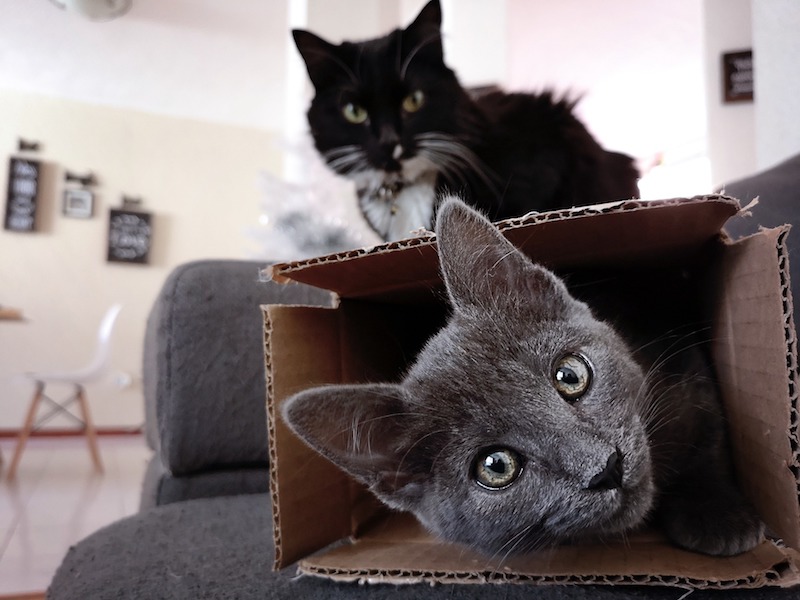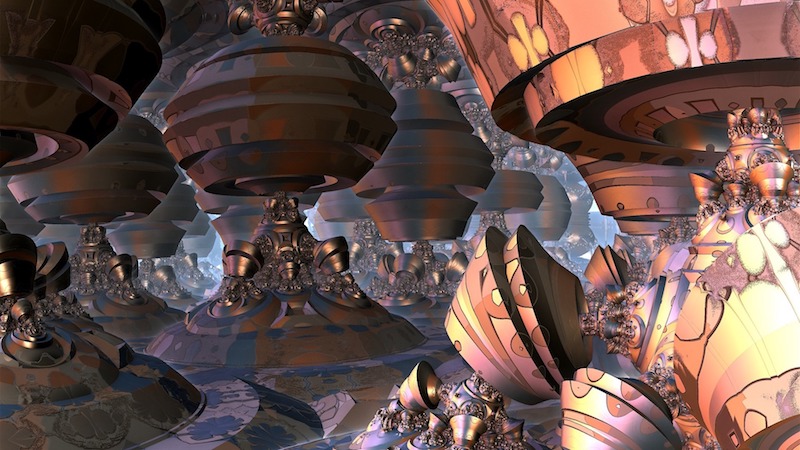One of the many strange paradoxes of quantum theory is that a particle can be in two places at once, what’s known as a quantum spatial superposition. This is the “location” version of the Schrödinger’s cat thought experiment, in which a cat placed in a box is both dead and alive until someone opens the box. With a spatial superposition, the particle is both here and there until the superposition collapses. At that point, the particle is observed in only one of those locations.
Physics textbooks commonly describe the superposition collapse as due to the act of measuring, or observing, the particle. In the Schrödinger’s cat example, it is actually a particle inside the box that is in a superposition, not the cat itself. Opening the box causes the collapse. If the particle ends up in one state, it triggers the release of a poison that kills the cat; if in the other state, the poison remains contained and the cat is safe. Until the measurement happens, though, the particle is in both states and so is the cat.
Other mechanisms have also been suggested for the collapse of a superposition. One of these is the gravity hypothesis, which was proposed by Hungarian physicist Károlyházy Frigyes in the 1960s, and later on in the 1980s by another physicist from the same country, Lajos Diósi.
In essence, this hypothesis states that an object’s gravitational field resists being put in a superposition of different states, including ones related to positions in space. If you do manage to get the particle into a superposition, the particle’s gravitational field will attempt to do the same, but it won’t be able to remain that way for long due to the inherent tension. Eventually, this will cause the superposition to collapse.
One of the strengths of the gravity hypothesis is that it takes measurement out of the equation, which also means people don’t have to be present in order for the collapse to happen. It’s a physics-only solution to superposition. However, until recently, physicists haven’t been able to use experiments to determine whether the hypothesis had any basis in reality. Diósi and his colleague have finally run those experiments. They published their results this month in the journal Nature Physics.

Testing the quantum superposition collapse
Their experiment was based on the idea that if a quantum collapse occurs due to a particle’s gravitational field — without being triggered by human measurement — there will still be some signal of that collapse. For example, the particle might swerve randomly. This could heat up the system or cause the particle to emit a photon. If multiple particles collapse, the effect will be amplified.
To test this, the researchers used a germanium crystal as a detector. If a collapse of superpositions in the crystal caused photons to be released, it would show up as gamma ray or x-ray emissions coming from the nuclei. The researchers shielded the crystal with lead and placed it 1.4 kilometers beneath the surface of the earth. After two months, they detected 576 photons, which is close to what you would expect due to naturally occurring radioactivity.
This is far short of the 70,000 photons predicted by the version of the gravity hypothesis developed by Oxford mathematician Roger Penrose. Study co-author Cătălina Curceanu of National Institute for Nuclear Physics in Rome told Science news that this suggests that the gravitational force is not responsible for the superposition collapse.
The next step for this research is to create a superposition of massive particles, something being worked on by Ivette Fuentes, a physicist at the University of Southampton in the UK. This gets around having to wait for random naturally occurring superpositions to collapse. She and her team plan to create clouds of 100 million sodium atoms, reports Science news.
However, this is not the end of the gravity hypothesis. Science reports that Penrose is working on another model of this type of collapse, one that doesn’t involve the particle swerving after it collapses — and one that might not be detected by the germanium experiment. Other factors may also be involved in masking the signal of the collapse. For now, though, we’ll just have to live with the quantum weirdness that is spatial superposition.


